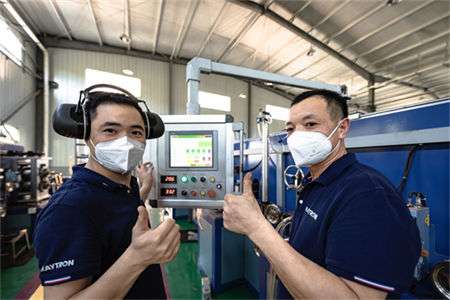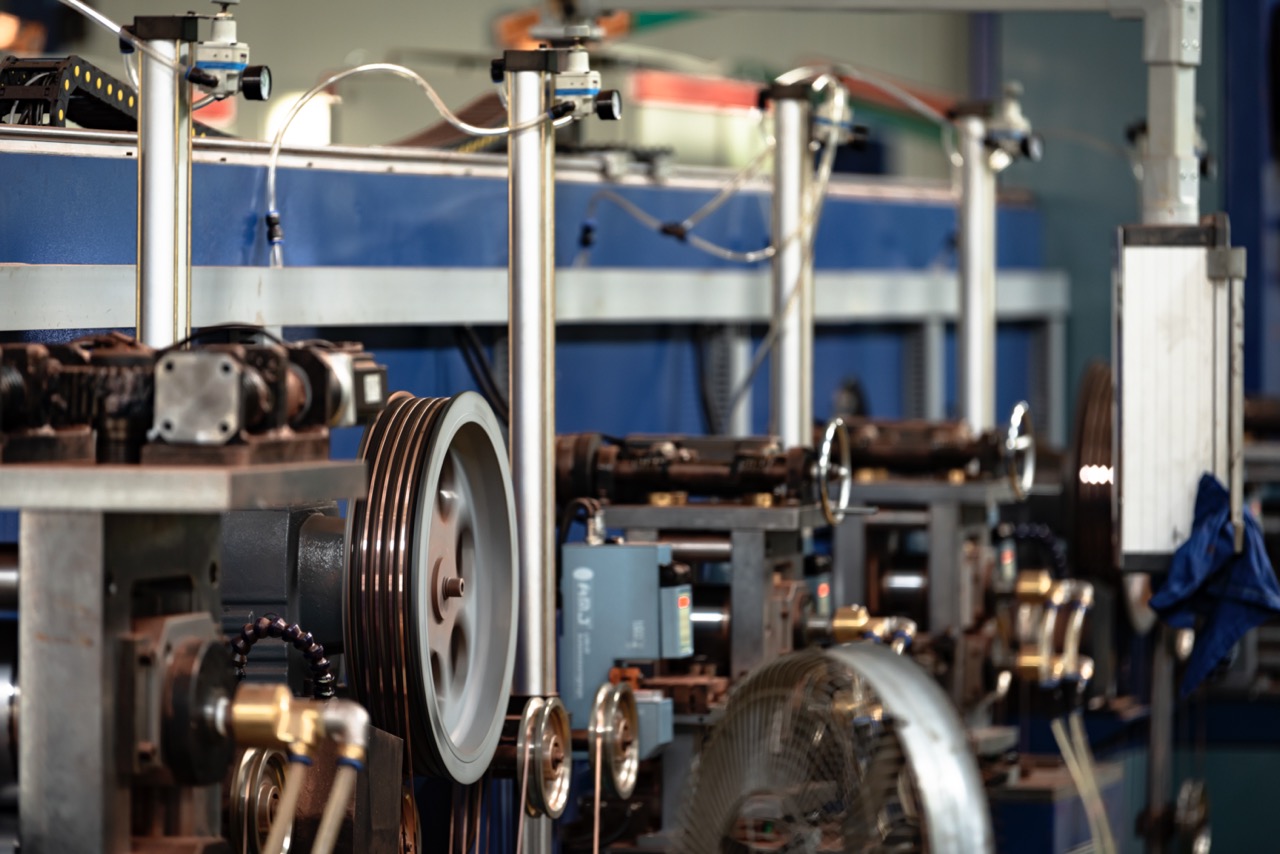ChinaPhotovoltaic welding ribbonIndustry Development Status
Photovoltaic ribbon, also calledTinned copper striporTinned copper strip,yesPhotovoltaic modulesIt is a key component used for electrical connection in photovoltaic cell packaging. Its appearance, size, mechanical properties, surface structure, resistivity and other performance indicators are important factors affecting photovoltaic power generation efficiency, photovoltaic cell fragmentation rate, and long-term reliability and durability of photovoltaic modules. According to the performance and application field of photovoltaic welding ribbon, photovoltaic welding ribbon can be divided into interconnection welding ribbon and bus welding ribbon.
Photovoltaic welding tape is mainly used for the connection of photovoltaic cells and is located in the middle reaches of the photovoltaic module manufacturing industry chain. At present, the cost of photovoltaic welding tape in photovoltaic modules accounts for about 3.2%. The raw materials of its products are mainly copper and tin alloys. The direct material cost of the product accounts for more than 90% of the total cost of photovoltaic welding tape. Others such as manufacturing costs, direct labor and transportation costs account for 3.48%, 1.59% and 0.40% respectively. The welding tape materials are mainly divided into lead-containing welding tape and lead-free welding tape. Lead-containing welding tape has the advantages of low cost, high welding reliability and good conductivity. It is still the main interconnection method currently used. In 2022, its market share will reach 99.3%. However, some countries and regions such as Europe require modules to use lead-free welding tape for environmental protection reasons. The market share in 2022 is only about 0.7%.
The development of the photovoltaic welding tape industry is closely related to the downstream photovoltaic module industry. As an important component of photovoltaic modules, photovoltaic welding tapes are naturally benefited by photovoltaic policies, and the industry has broad prospects. In recent years, the scale of China's photovoltaic welding tape market has continued to expand. Due to the rapid development of the photovoltaic industry, the demand for photovoltaic welding tapes as key auxiliary materials has continued to increase. In 2022, the global photovoltaic installed capacity will reach 240GW, and the corresponding welding tape demand value will total 12.03 billion yuan. It is estimated that from 2023 to 2025, the market demand for photovoltaic welding tapes is expected to reach 19 billion yuan, 21.9 billion yuan and 25.4 billion yuan respectively, with an annual compound growth rate of more than 25%.
Under the strategic background of "Made in China 2025", my country's industrial production technology is constantly upgraded, and large-scale development has become a development trend of the manufacturing industry. As a green renewable energy industry, the photovoltaic industry has broad space for future industry market development, and the photovoltaic welding tape enterprises in its subdivided fields will also have a broad market growth space. However, with the continuous development of the photovoltaic welding tape industry, the survival of the fittest in the industry has intensified, and the survival pressure of photovoltaic welding tape enterprises with small scale and weak cost control ability has increased day by day, and small-scale technologically backward enterprises will gradually withdraw from the market. Large-scale photovoltaic welding tape enterprises implement large-scale production, and have strong advantages in financial strength, cost control, product supply chain, management experience, etc. At the same time, they invest a lot of money in product research and development. The product technology content is high, the pressure resistance is relatively strong, and it has a good competitive advantage. The market concentration of the welding tape industry will continue to increase, and enterprises with large scale and strong technical strength will have good development prospects in the future. In the future, the industry market will continue to move closer to welding tape enterprises with strong technical strength and large scale.
Since the electrical loss of photovoltaic modules 80% to 90% is related to the welding tape, as parity and low-cost access to the grid become important development directions of the photovoltaic market, it has become an important development trend to promote the continuous advancement of the technology of the photovoltaic welding tape industry, reduce the impact of welding tape on the electrical loss of modules, and improve the power generation efficiency of modules. In the future, as photovoltaic module companies increase their requirements for welding tape technology and product stability, it will drive welding tape companies to continuously introduce new technologies to improve product performance, such as optimizing the mechanical properties, electrical properties, and reflective properties of welding tapes, and promote the continuous upgrading of welding tape industry technology.

Competition landscape of China's photovoltaic welding ribbon industry
There are many manufacturers in the Chinese photovoltaic ribbon market, and the market competition is fierce. Some large companies have advantages in technology research and development, production scale, quality control, etc., and can occupy a dominant position in the market. Some small and medium-sized enterprises seek market breakthroughs through cost advantages and flexible market strategies.
China's photovoltaic welding tape industry is mainly dominated by private enterprises, with a high degree of marketization and concentration. In addition, photovoltaic welding tape manufacturing companies are concentrated in the East China region, especially in Jiangsu and Zhejiang, where the photovoltaic module industry is well developed and the photovoltaic welding tape industry is also developing rapidly. By the end of 2023, the number of registered photovoltaic welding tape-related companies in Jiangsu will reach 340, and in Zhejiang will reach 63.
Among the leading enterprises, Yubang New Materials ranked first with a market share of 16.5%; Tongxiang Technology, Sun Technology, Tailisong, Weiteng Shares, Yitong Technology, and Aidi New Energy had market shares of 10.2%, 6.5%, 5.1%, 4.8%, 2.4%, and 1.5%, respectively. With the iterative upgrade trend of N-type products and the increasingly stringent overseas trade policies, the R&D leadership of welding strip manufacturers in product structure and process technology will become an important competitive advantage.
Photovoltaic ribbon isSolar PhotovoltaicThe sub-sectors in the industry have the characteristics of "small industry, big market". With the increasing maturity of photovoltaic power generation technology, the challenges of environmental protection and energy crisis are becoming more and more serious. Governments of various countries have introduced a series of policies to encourage the development of renewable energy such as solar energy. Chinese photovoltaic manufacturing companies seized the opportunity of encouragement and subsidies from governments of various countries to seize the global market, rapidly expand production capacity, and develop the photovoltaic industry rapidly. my country has become the country with the largest output of photovoltaic modules in the world, and its sales market is mainly divided into two major markets: domestic and foreign. Although domestic market demand is constantly expanding, the export sales of my country's photovoltaic module products still account for a large proportion. Therefore, the development of my country's photovoltaic modules is still affected by the global economic and policy environment. The sales of photovoltaic welding ribbons, which are upstream of photovoltaic modules, are also indirectly affected.
In summary, while China's photovoltaic ribbon industry is developing rapidly, it is also facing fierce market competition and a changing policy environment. Enterprises need to continuously strengthen technology research and development and improve their innovation capabilities to cope with market challenges and seize development opportunities.
